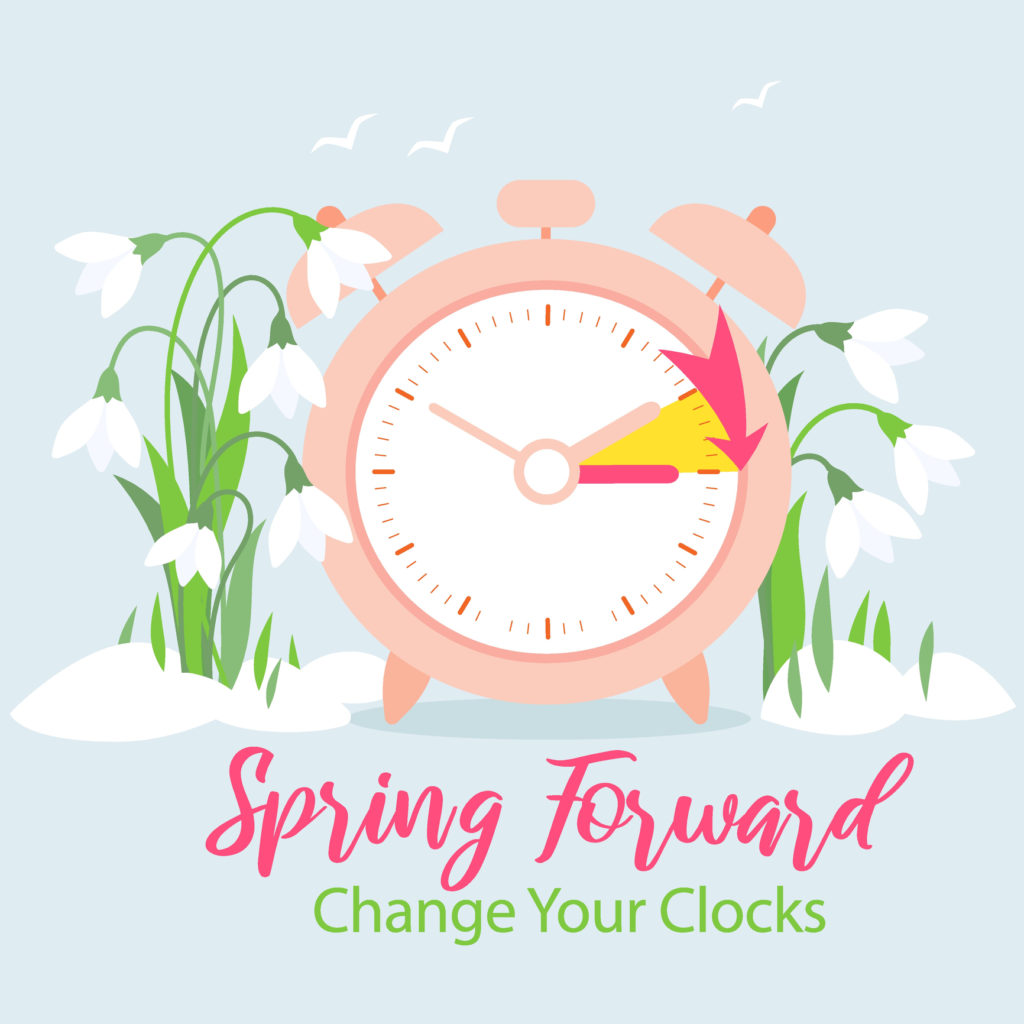Daylight Saving Time Begins On Sunday At 2 AM. Set Your Clocks Forward One Hour.

Photo: istock
Source: Wikipedia
Daylight saving time (DST) is the practice of advancing clocks (typically by one hour) during warmer months so that darkness falls at a later clock time. The typical implementation of DST is to set clocks forward by one hour in the spring (“spring forward”), and to set clocks back by one hour in the fall (“fall back”) to return to standard time. As a result, there is one 23-hour day in early spring and one 25-hour day in the middle of autumn.
The idea of aligning waking hours to daylight hours to conserve candles was first proposed in 1784 by Benjamin Franklin. In a satirical letter to the editor of The Journal of Paris, Franklin suggested that waking up earlier in the summer would economize on candle usage; and calculated considerable savings.
A move to permanent daylight saving time (staying on summer hours all year with no time shifts) is sometimes advocated and is currently implemented in some jurisdictions such as Argentina, Belarus, Iceland, Kyrgyzstan, Morocco, Namibia, Saskatchewan, Singapore, Turkey, Turkmenistan, Uzbekistan and the Yukon.
The Move Toward Permanent DST
In the United States, several states have enacted legislation to implement permanent DST, but the bills would require Congress to change federal law in order to take effect. The Uniform Time Act of 1966 permits states to opt out of DST and observe permanent standard time, it does not permit permanent DST. Florida senator Marco Rubio in particular has promoted changing the federal law to implement permanent DST, with the support of the Florida Chamber of Commerce seeking to boost evening revenue. In 2022, Rubio’s “Sunshine Protection Act” passed the United States Senate without committee review by way of voice consent, with many senators afterward stating they were unaware of the vote or its topic. The bill was stopped in the U.S. House, where questions were raised as to whether permanent DST or standard time would be more beneficial.
19 states have passed bills or resolutions since 2018 to make daylight saving time year-round if Congress acts, according to the National Conference of State Legislatures. States with pending legislation include: Alaska, Illinois, Iowa, Kentucky, Maine, Maryland, Minnesota, Missouri, Montana, Nebraska, New Jersey, New York, Oregon, South Carolina and Tennessee.
Is Permanent Standard Time Better?
Experts in circadian rhythms and sleep health recommend year-round standard time as the preferred option for public health and safety. Several chronobiology societies have published position papers against adopting DST permanently. A paper by the Society for Research on Biological Rhythms states: “based on comparisons of large populations living in DST or ST or on western versus eastern edges of time zones, the advantages of permanent ST outweigh switching to DST annually or permanently. The World Federation of Societies for Chronobiology stated that “the scientific literature strongly argues against the switching between DST and Standard Time and even more so against adopting DST permanently. The American Academy of Sleep Medicine (AASM) holds the position that “seasonal time changes should be abolished in favor of a fixed, national, year-round standard time, and that “standard time is a better option than daylight saving time for our health, mood and well-being. The AASM’s position is endorsed by 20 other nonprofits, including the American College of Chest Physicians, National Safety Council, and National PTA.
Current public opinion polls show mixed results, with few ever reporting a true majority sentiment for a permanent change. Surveys reported between 2021 and 2022 by the National Sleep Foundation, YouGov, CBS, and Monmouth University indicate more Americans would prefer permanent DST.] A 2019 survey by National Opinion Research Center and a 2021 survey by the Associated Press indicate more Americans would prefer permanent Standard Time. The National Sleep Foundation, YouGov, and Monmouth University polls leaned significantly in favor of seeing Daylight Saving Time made permanent. The Monmouth University poll reported 44% preferring year-round DST and 13% preferring year-round standard time In 1973 and 1974, NORC found 79% of Americans to be in favor of permanent DST before its implementation during the Oil Crisis, and only 42% to support permanent DST the following February.
More information
